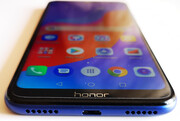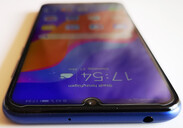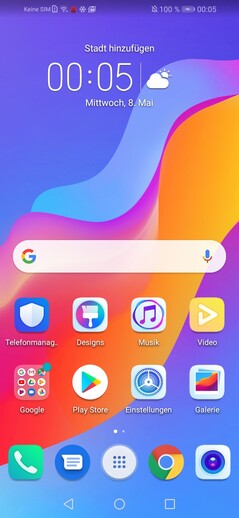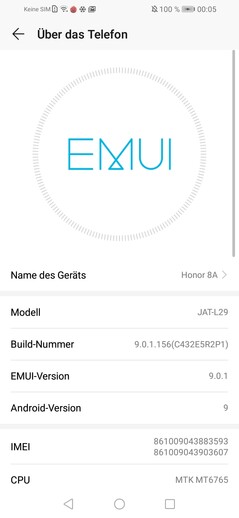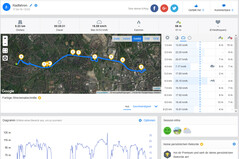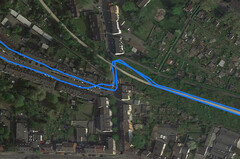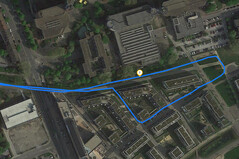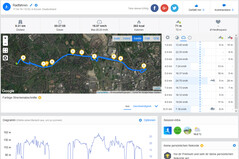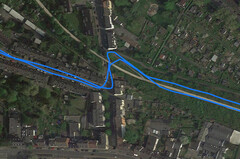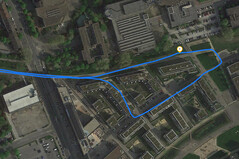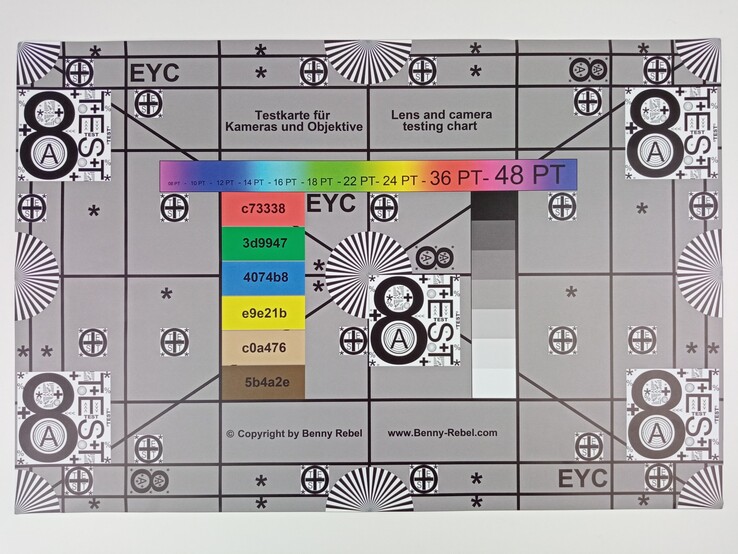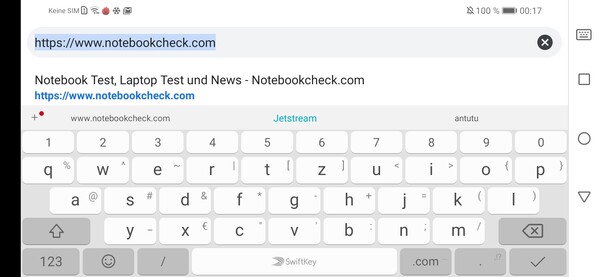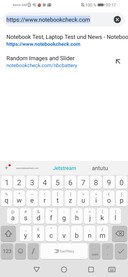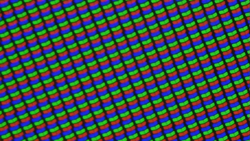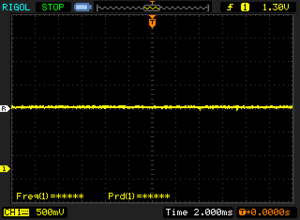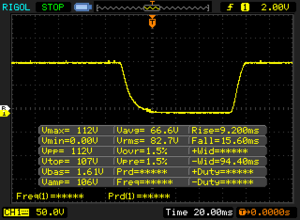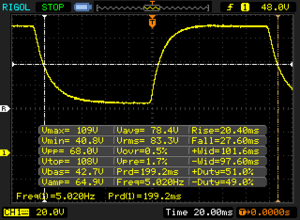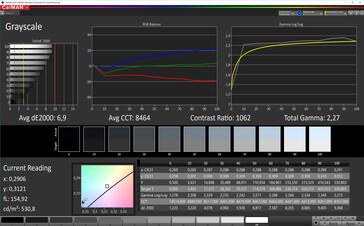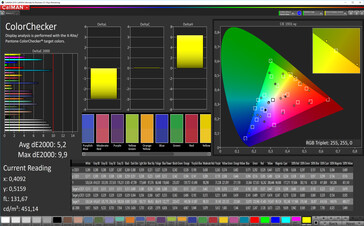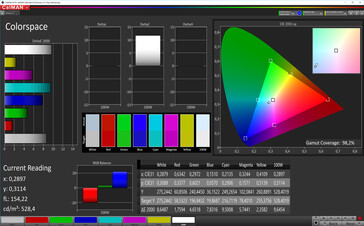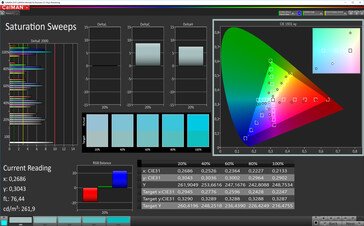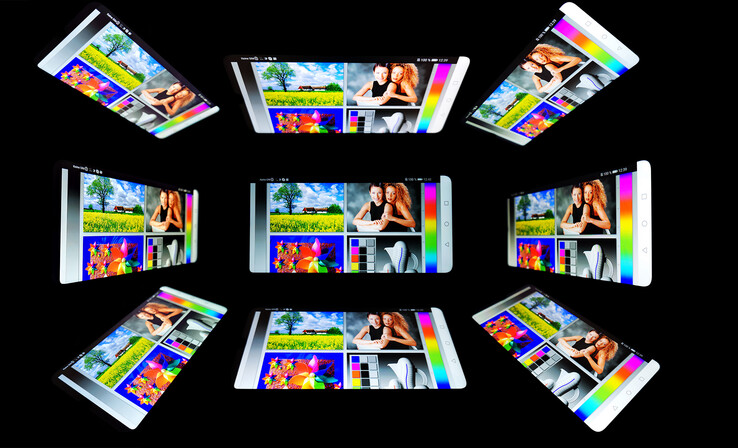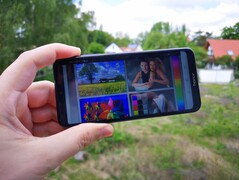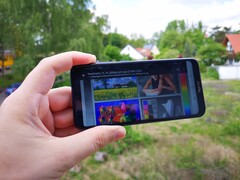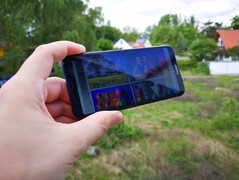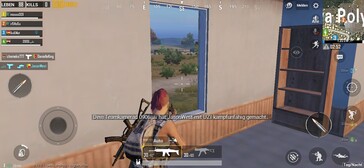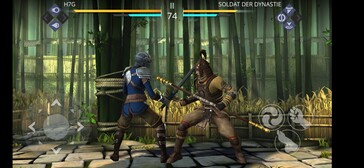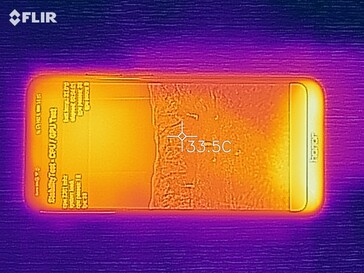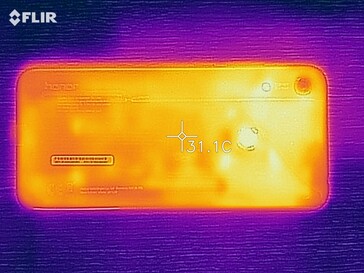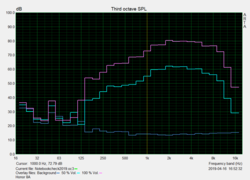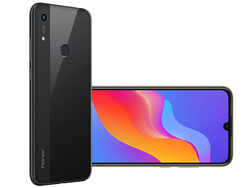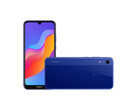Honor 8A Smartphone Review
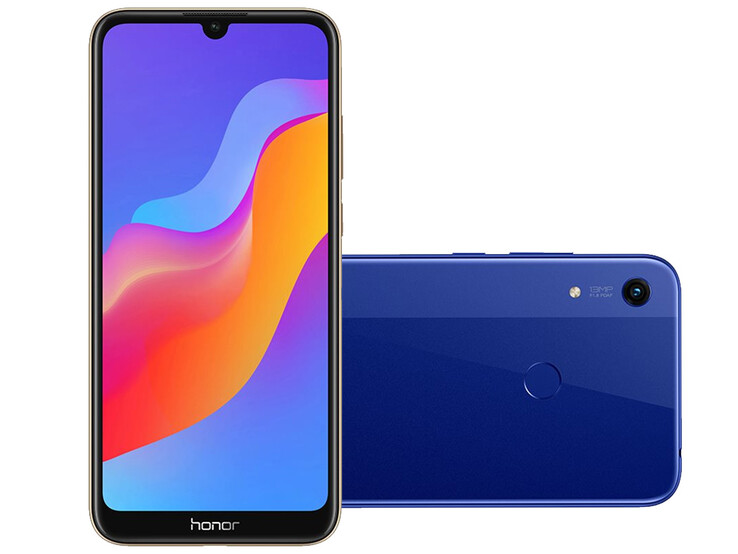
The Honor 8A is the successor to last year’s Honor 7A, which offered a great price-performance ratio, a modern design with narrow bezels, and decent performance and battery life. Its main drawbacks were a comparatively dim display and a cheap look and feel, which came mostly from the cheap-looking plastic used during the molding and manufacturing process. Considering its low price we were not particularly surprised to be honest.
Then came the Y6 (2019) by Honor’s parent company Huawei, which proved, at least in regard to the brown model, that cheap and sleek do not have to be mutually exclusive. Then again design is not everything. For the sake of this review, we have pitched the Honor 8A against its own predecessor, the Honor 7A, as well as the Xiaomi Redmi 7, the Huawei Y6 2019, and the Wiko View 2 Go.
Case
The first thing you will notice immediately upon picking up the Honor 8A for the first time is that it looks and feels better than expected given its low price point, but at the same time it is no match for its more expensive competitors. The stylish double-textured case may be somewhat impressive for a short period of time but that’s about it. Unfortunately, the reflective coating at the back looks and feels slightly dull and cannot compete against the glass rear covers of pricier competitors. It is very efficient at attracting fingerprints and smudges, though. The design is brightened up slightly by the narrow matte band on the left-hand side of the case.
The plastic frame’s color matches the rest of the case, and it contains the volume rocker, the power button, a 3.5-mm headphone jack at the top, and a speaker as well as the microUSB port at the bottom. The SIM card tray for two SIM cards plus microSD card is located at the left-hand side. At the front, we find a large display with very narrow bezels for an entry-level device and a waterdrop notch. The bottom bezel containing the Honor logo is bigger than the other three.
Despite its low price, build quality was superb. The buttons sit tight inside their respective cavities and offer perfect travel and feedback. Gaps were consistent, and the case produced only minor creaking when we attempted to warp it. If we had to present you with one gripe it would be the hollow sound the device makes when you tap on its back. Thanks to its rounded edges the Honor 8A felt very comfortable in the hand, and at just 156.3 x 73.5 x 8 mm (6.15 x 2.89 x 0.31 inches) and 150 g (5.29 oz / 0.33 lbs) it was pleasantly compact and lightweight.
Connectivity
Compared to its predecessor the internal storage has been doubled in capacity to 32 GB. Like before it can be expanded via microSD cards, and the 8A supports cards with up to 512 GB in size. The fingerprint reader remained at the back, and unfortunately the device still features a microUSB port at the bottom instead of the more modern USB-C connector. NFC is not supported.
Software
With Android 9.0 Pie and EMUI 9.0, the Honor 8A runs an up-to-date version of Google’s operating system. It lacks support for Magic UI, which is only offered on more-expensive models such as the Honor 20. At the time of writing, security patches were as of March 1, 2019 and thus sufficiently up-to-date. In addition to Honor’s/Huawei’s own apps, such as the Huawei App Gallery, we also found various third-party applications such as Amazon or Booking.com preloaded on the device. The availability of future updates is uncertain due to the current trade conflict between China and the United States.
Communication and GPS
Like its predecessor the Honor 8A supports LTE Cat 4 (up to 150 Mb/s downstream), which is acceptable for an entry-level device. The list of supported LTE frequencies is not particularly long but at least sufficient for European markets. We did not have any issues during our review period.
Wi-Fi is only supported in the 2.4 GHz band, and the device does not support ac Wi-Fi at all. When connected to our Linksys EA8500 reference router and downloading data the Honor 8A turned out to be ever so slightly slower than the Huawei Y6 2019. That said it was still more than fast enough. Uploads were a different story, though, and the 8A was even slower than its own predecessor and consequently ended up in last place.
| Networking | |
| iperf3 transmit AX12 | |
| Xiaomi Redmi 7 | |
| Wiko View 2 Go | |
| Honor 7A | |
| Huawei Y6 2019 | |
| Honor 8A | |
| iperf3 receive AX12 | |
| Huawei Y6 2019 | |
| Honor 8A | |
| Wiko View 2 Go | |
| Xiaomi Redmi 7 | |
| Honor 7A | |
Supported location services include A-GPS, GLONASS, and BDS, and they worked very well in general. Even indoor GPS accuracy was fairly high. Outdoors, GPS lock was obtained very quickly and accurately. It was, however, not as accurate as the Garmin Edge 500 professional satnav, and it cut corners quite regularly and extensively when recording the track. That said it was in good company since even more-expensive smartphones are not necessarily any better in this regard.
Telephony and Call Quality
The stock telephone app is practically identical to Google’s default vanilla Android telephony app, and users should thus find their way around it almost immediately and without any issues. Call quality was decent, especially considering the device’s low price, and there were no issues understanding each other while on a phone call. Ambient noises were sometimes reduced to a soft and muddy fizzle, which was somewhat distracting to be honest. The speaker turned out to be very loud and worked surprisingly well for making phone calls; however, we suggest keeping the ambient noise level down if possible. Carrier support presupposed, the Honor 8A also supports VoLTE.
Cameras
The main camera features a 13 MP sensor with a light-sensitive aperture of f/1.8 for improved low-light photo quality. The front-facing secondary camera is equipped with an 8 MP sensor. The light-sensitive nature of the main rear-facing shooter turned out to be superior to the 8A’s direct competitor, the Y6 (2019). Naturally, more-expensive smartphones such as the Samsung Galaxy S10 Plus produced much better results, but considering the Honor 8A’s price point the photos were more than decent.
The same can be said for photos taken in good light. Close-range focus was acceptable, long-range focus less so. Dynamic range was also in need of improvement, and bright clouds were practically indistinguishable from a bright sky despite support for HDR. Videos turned out similar to photos overall. We should add though that the frame rate is too low for pan shots, the resolution is limited to 1080p, and there is no image stabilization at all.
The front-facing camera lacks support for HDR and features an aperture of f/2.0. Accordingly, it is not as light-sensitive as the rear-facing main camera and produces photos with an even more unbalanced dynamic range and a much higher noise ratio. Focus is decent, at least at close range. These issues with focus and noise were further corroborated under normalized conditions.
Accessories and Warranty
The included accessories are identical to the predecessor's. In the box, we found a charger, a USB cable, a SIM tool, a quick-start guide, and a warranty booklet.
Warranty depends on the country the device was purchased in. For example, devices sold in Europe come with a 24-month warranty by default.
Input Devices and Handling
The Honor 8A comes with a screen protector ex factory, which felt somewhat sharp around the edges and was thus uncomfortable to use. It had no effect on the device’s usability, though, and the touchscreen remained very smooth. Typing on the accurate SwiftKey keyboard worked flawlessly and without any issues, and the display was capable of accurately detecting touch input up to its very edges.
The rear-mounted fingerprint reader was incapable of keeping up with its more expensive flagship brethren. Nevertheless, it was sufficiently fast and accurate. Subjectively, performance was acceptable most of the time with only minor lag every now and then. Browsing the web was fast and smooth, as was scrolling through websites. Changes in orientation, from portrait to landscape or vice versa, were pretty slow.
Display
The 6.1-inch display runs at a native resolution of 1560x720 with a resulting pixel density of less than 330 PPI. This may sound comparatively poor; however, we had almost no issues in everyday use. While its predecessor, the Honor 7A, still suffered from a dim display the Honor 8A offers an acceptable 540 nits on average. Unfortunately, black level and contrast are worse than they were last year but are still more than acceptable when compared to other smartphones in the device’s price range. The same can be said for color and grayscale accuracy. The overall very similar Huawei Y6 (2019) cannot keep up with the Honor 8A in terms of display brightness.
| |||||||||||||||||||||||||
Brightness Distribution: 94 %
Center on Battery: 522 cd/m²
Contrast: 1111:1 (Black: 0.47 cd/m²)
ΔE ColorChecker Calman: 4 | ∀{0.5-29.43 Ø4.78}
ΔE Greyscale Calman: 6.6 | ∀{0.09-98 Ø5}
98.1% sRGB (Calman 2D)
Gamma: 2.28
CCT: 7258 K
| Honor 8A IPS, 1520x720, 6.1" | Honor 7A IPS, 1440x720, 5.7" | Xiaomi Redmi 7 IPS, 1520x720, 6.3" | Huawei Y6 2019 IPS LCD, 1560x720, 6.1" | Wiko View 2 Go IPS, 1512x720, 5.9" | |
|---|---|---|---|---|---|
| Screen | 7% | 2% | 7% | 7% | |
| Brightness middle (cd/m²) | 522 | 417 -20% | 444 -15% | 487 -7% | 465 -11% |
| Brightness (cd/m²) | 542 | 395 -27% | 441 -19% | 485 -11% | 462 -15% |
| Brightness Distribution (%) | 94 | 88 -6% | 90 -4% | 89 -5% | 84 -11% |
| Black Level * (cd/m²) | 0.47 | 0.18 62% | 0.45 4% | 0.35 26% | 0.32 32% |
| Contrast (:1) | 1111 | 2317 109% | 987 -11% | 1391 25% | 1453 31% |
| Colorchecker dE 2000 * | 4 | 6.46 -62% | 3.94 1% | 4.3 -8% | 4.76 -19% |
| Colorchecker dE 2000 max. * | 9.5 | 10.72 -13% | 6.72 29% | 10.1 -6% | 7.71 19% |
| Greyscale dE 2000 * | 6.6 | 5.8 12% | 4.8 27% | 4.1 38% | 4.6 30% |
| Gamma | 2.28 96% | 2.423 91% | 2.294 96% | 2.09 105% | 2.674 82% |
| CCT | 7258 90% | 7839 83% | 7445 87% | 7312 89% | 6806 96% |
* ... smaller is better
Screen Flickering / PWM (Pulse-Width Modulation)
| Screen flickering / PWM not detected | |||
In comparison: 53 % of all tested devices do not use PWM to dim the display. If PWM was detected, an average of 8111 (minimum: 5 - maximum: 343500) Hz was measured. | |||
Display Response Times
| ↔ Response Time Black to White | ||
|---|---|---|
| 24.8 ms ... rise ↗ and fall ↘ combined | ↗ 9.2 ms rise | |
| ↘ 15.6 ms fall | ||
| The screen shows good response rates in our tests, but may be too slow for competitive gamers. In comparison, all tested devices range from 0.1 (minimum) to 240 (maximum) ms. » 57 % of all devices are better. This means that the measured response time is worse than the average of all tested devices (20.2 ms). | ||
| ↔ Response Time 50% Grey to 80% Grey | ||
| 48 ms ... rise ↗ and fall ↘ combined | ↗ 20.4 ms rise | |
| ↘ 27.6 ms fall | ||
| The screen shows slow response rates in our tests and will be unsatisfactory for gamers. In comparison, all tested devices range from 0.165 (minimum) to 636 (maximum) ms. » 82 % of all devices are better. This means that the measured response time is worse than the average of all tested devices (31.6 ms). | ||
A big plus of last year’s model was the total lack of PWM, and this was also true for this year’s refresh. Using a spectrophotometer and the CalMAN software we were able to detect a blue tint that is quite common for LCDs. Overall, colors were more accurate than grays, and color-space coverage was acceptable. All things considered the Honor 8A did pretty well in this regard.
Performance
The MediaTek MT6765 Helio P35 SoC with four Cortex-A53 cores running at up to 2.3 GHz and four Cortex-A53 cores running at up to 1.8 GHz should offer a decent level of performance. Combined with the PowerVR GE8320 GPU and 2 GB of RAM, the Honor 8A outperformed its direct competitor, the Y6 2019 most of the time. However, in some benchmarks, such as PCMark, it turned out to be slower than its own Honor 7A predecessor. Thanks to its Qualcomm Snapdragon 632, the Xiaomi Redmi 7 was the only competitor significantly faster than the Honor 8A.
| PCMark for Android | |
| Work performance score (sort by value) | |
| Honor 8A | |
| Honor 7A | |
| Xiaomi Redmi 7 | |
| Huawei Y6 2019 | |
| Wiko View 2 Go | |
| Average Mediatek Helio P35 MT6765 (4040 - 7753, n=8) | |
| Work 2.0 performance score (sort by value) | |
| Honor 8A | |
| Honor 7A | |
| Xiaomi Redmi 7 | |
| Huawei Y6 2019 | |
| Wiko View 2 Go | |
| Average Mediatek Helio P35 MT6765 (3814 - 5794, n=11) | |
| GFXBench (DX / GLBenchmark) 2.7 | |
| T-Rex Onscreen (sort by value) | |
| Honor 8A | |
| Honor 7A | |
| Xiaomi Redmi 7 | |
| Huawei Y6 2019 | |
| Wiko View 2 Go | |
| Average Mediatek Helio P35 MT6765 (18 - 31, n=6) | |
| Average of class Smartphone (12 - 166, n=156, last 2 years) | |
| 1920x1080 T-Rex Offscreen (sort by value) | |
| Honor 8A | |
| Honor 7A | |
| Xiaomi Redmi 7 | |
| Huawei Y6 2019 | |
| Wiko View 2 Go | |
| Average Mediatek Helio P35 MT6765 (19 - 23, n=6) | |
| Average of class Smartphone (22 - 954, n=156, last 2 years) | |
| GFXBench 3.0 | |
| on screen Manhattan Onscreen OGL (sort by value) | |
| Honor 8A | |
| Honor 7A | |
| Xiaomi Redmi 7 | |
| Huawei Y6 2019 | |
| Wiko View 2 Go | |
| Average Mediatek Helio P35 MT6765 (9.1 - 20, n=6) | |
| Average of class Smartphone (18 - 166, n=158, last 2 years) | |
| 1920x1080 1080p Manhattan Offscreen (sort by value) | |
| Honor 8A | |
| Honor 7A | |
| Xiaomi Redmi 7 | |
| Huawei Y6 2019 | |
| Wiko View 2 Go | |
| Average Mediatek Helio P35 MT6765 (9.8 - 12, n=6) | |
| Average of class Smartphone (12 - 606, n=156, last 2 years) | |
| GFXBench 3.1 | |
| on screen Manhattan ES 3.1 Onscreen (sort by value) | |
| Honor 8A | |
| Honor 7A | |
| Xiaomi Redmi 7 | |
| Huawei Y6 2019 | |
| Wiko View 2 Go | |
| Average Mediatek Helio P35 MT6765 (6 - 14, n=6) | |
| Average of class Smartphone (11 - 166, n=157, last 2 years) | |
| 1920x1080 Manhattan ES 3.1 Offscreen (sort by value) | |
| Honor 8A | |
| Honor 7A | |
| Xiaomi Redmi 7 | |
| Huawei Y6 2019 | |
| Wiko View 2 Go | |
| Average Mediatek Helio P35 MT6765 (5.8 - 8.1, n=6) | |
| Average of class Smartphone (8.4 - 413, n=157, last 2 years) | |
| Basemark GPU 1.1 | |
| 1920x1080 Vulkan Medium Offscreen (sort by value) | |
| Honor 8A | |
| Huawei Y6 2019 | |
| Vulkan Medium Native (sort by value) | |
| Honor 8A | |
| Huawei Y6 2019 | |
| 1920x1080 OpenGL Medium Offscreen (sort by value) | |
| Honor 8A | |
| Huawei Y6 2019 | |
| AnTuTu v7 - Total Score (sort by value) | |
| Honor 8A | |
| Honor 7A | |
| Xiaomi Redmi 7 | |
| Huawei Y6 2019 | |
| Wiko View 2 Go | |
| Average Mediatek Helio P35 MT6765 (n=1) | |
| Basemark ES 3.1 / Metal - offscreen Overall Score (sort by value) | |
| Honor 8A | |
| Average Mediatek Helio P35 MT6765 (n=1) | |
| Average of class Smartphone (205 - 7731, n=36, last 2 years) | |
In our web-browsing benchmark, the Honor 8A was the slowest device in our test group, albeit the difference was negligible (except for aforementioned Redmi 7). Subjectively, we were unable to tell the difference between the various models.
| Jetstream 2 - 2.0 Total Score | |
| Average of class Smartphone (23.8 - 387, n=152, last 2 years) | |
| Xiaomi Redmi 7 (Chrome 73) | |
| Average Mediatek Helio P35 MT6765 (13.6 - 17.3, n=4) | |
| Huawei Y6 2019 | |
| Honor 8A | |
| Speedometer 2.0 - Result 2.0 | |
| Average of class Smartphone (15.2 - 643, n=126, last 2 years) | |
| Xiaomi Redmi 7 (Chome 73) | |
| Huawei Y6 2019 (Chrome) | |
| Honor 8A (Chrome) | |
| Average Mediatek Helio P35 MT6765 (13.7 - 16, n=4) | |
| WebXPRT 3 - Overall | |
| Average of class Smartphone (38 - 380, n=34, last 2 years) | |
| Xiaomi Redmi 7 (Chrome 73) | |
| Huawei Y6 2019 | |
| Average Mediatek Helio P35 MT6765 (29 - 36, n=4) | |
| Honor 8A (Chrome) | |
| Octane V2 - Total Score | |
| Average of class Smartphone (2228 - 121337, n=199, last 2 years) | |
| Xiaomi Redmi 7 (Chrome 73) | |
| Average Mediatek Helio P35 MT6765 (4347 - 7140, n=6) | |
| Huawei Y6 2019 (Chrome) | |
| Honor 8A (Chrome) | |
| Honor 7A (Chrome 67) | |
| Wiko View 2 Go (Chrome 71) | |
| Mozilla Kraken 1.1 - Total | |
| Honor 7A (Chrome 67) | |
| Wiko View 2 Go (Chrome 71) | |
| Honor 8A (Chrome) | |
| Average Mediatek Helio P35 MT6765 (9756 - 11323, n=5) | |
| Huawei Y6 2019 | |
| Xiaomi Redmi 7 (Chrome 73) | |
| Average of class Smartphone (257 - 28190, n=154, last 2 years) | |
* ... smaller is better
Storage performance was inconspicuous overall, and the Honor 8A was neither particularly fast nor particularly slow when we ran our benchmarks on the internal storage memory or our Toshiba Exceria Pro M501 reference card.
| Honor 8A | Honor 7A | Xiaomi Redmi 7 | Huawei Y6 2019 | Average 32 GB eMMC Flash | Average of class Smartphone | |
|---|---|---|---|---|---|---|
| AndroBench 3-5 | -16% | 3% | 5% | -3% | 1225% | |
| Sequential Read 256KB (MB/s) | 265 | 254.8 -4% | 298 12% | 279.3 5% | 242 ? -9% | 2213 ? 735% |
| Sequential Write 256KB (MB/s) | 104 | 72.5 -30% | 84.7 -19% | 107.8 4% | 100.5 ? -3% | 1831 ? 1661% |
| Random Read 4KB (MB/s) | 61 | 39.2 -36% | 73.6 21% | 69 13% | 43.1 ? -29% | 294 ? 382% |
| Random Write 4KB (MB/s) | 15 | 9.4 -37% | 14.4 -4% | 15 0% | 22.3 ? 49% | 333 ? 2120% |
| Sequential Read 256KB SDCard (MB/s) | 81.9 | 84.9 ? 4% | 85.9 ? 5% | 83.2 ? 2% | 71.8 ? -12% | |
| Sequential Write 256KB SDCard (MB/s) | 61.8 | 65.4 ? 6% | 63.3 ? 2% | 64.4 ? 4% | 52.9 ? -14% |
Gaming
Simple 2D games such as Angry Birds or less-demanding 3D games like Shadow Fight 3 ran smoothly on the Honor 8A, albeit some games may require reduced details to remain playable. More-demanding 3D games, such as Asphalt 9, ran at less than 24 to 30 FPS, which would be generally considered a smooth experience. Sometimes the game would even crash completely leaving the impression that the Honor 8A’s hardware was overwhelmed with the task at hand. We used Gamebench, which can be downloaded here, to run our benchmarks. Long story short: Despite the fact that input via gyroscope and touchscreen worked flawlessly the Honor 8A is not suitable for gamers.
GameBench PUBG (low graphics settings)
GameBench Asphalt 9 (low graphics settings)
Gamebench Shadow Fight 3 (low graphics settings)
Emissions
Temperature
With surface temperatures of just 35 °C and internal temperatures of no more than 40 °C under load the Honor 8A remained very cool overall. The predecessor got significantly warmer and reached almost 42 °C at the surface and much higher internal temperatures. Frame drops due to high temperatures can still happen but are rather unlikely.
(+) The maximum temperature on the upper side is 34.6 °C / 94 F, compared to the average of 35.2 °C / 95 F, ranging from 21.9 to 247 °C for the class Smartphone.
(+) The bottom heats up to a maximum of 31.7 °C / 89 F, compared to the average of 34 °C / 93 F
(+) In idle usage, the average temperature for the upper side is 27.6 °C / 82 F, compared to the device average of 32.9 °C / 91 F.
Speakers
The single speaker is hidden behind two gratings, and it performed much better than on the predecessor. We found no signs of distortion. However, the Honor 8A lacked bass, as expected. All things considered the speaker performed very well.
As usual we suggest using external speakers or headphones for an improved audio experience. Unlike on the Huawei Y6 a headset is not included with the Honor 8A, and users need to equip their own unit that can be connected either via 3.5-mm headphone jack or Bluetooth. Both worked flawlessly and can be further fine-tuned with an equalizer.
Like before, the Honor 8A can be interconnected with up to eight other Honor devices in order to create a surround sound system.
Honor 8A audio analysis
(+) | speakers can play relatively loud (89.4 dB)
Bass 100 - 315 Hz
(-) | nearly no bass - on average 23.8% lower than median
(±) | linearity of bass is average (11.7% delta to prev. frequency)
Mids 400 - 2000 Hz
(±) | reduced mids - on average 5.2% lower than median
(+) | mids are linear (3.8% delta to prev. frequency)
Highs 2 - 16 kHz
(±) | higher highs - on average 5.3% higher than median
(+) | highs are linear (2.2% delta to prev. frequency)
Overall 100 - 16.000 Hz
(±) | linearity of overall sound is average (19.4% difference to median)
Compared to same class
» 27% of all tested devices in this class were better, 8% similar, 65% worse
» The best had a delta of 11%, average was 35%, worst was 134%
Compared to all devices tested
» 47% of all tested devices were better, 7% similar, 46% worse
» The best had a delta of 4%, average was 24%, worst was 134%
Honor 7A audio analysis
(±) | speaker loudness is average but good (78.6 dB)
Bass 100 - 315 Hz
(-) | nearly no bass - on average 58.8% lower than median
(+) | bass is linear (0% delta to prev. frequency)
Mids 400 - 2000 Hz
(-) | nearly no mids - on average 58.8% lower than median
(+) | mids are linear (0% delta to prev. frequency)
Highs 2 - 16 kHz
(-) | nearly no highs - on average 58.8% lower than median
(+) | highs are linear (0% delta to prev. frequency)
Overall 100 - 16.000 Hz
(-) | overall sound is not linear (113.1% difference to median)
Compared to same class
» 87% of all tested devices in this class were better, 2% similar, 11% worse
» The best had a delta of 11%, average was 35%, worst was 134%
Compared to all devices tested
» 96% of all tested devices were better, 1% similar, 3% worse
» The best had a delta of 4%, average was 24%, worst was 134%
Battery Life
Power Consumption
Even though the 3,020 mAh battery is identical to the Y6 (2019), battery life differed between the two contenders. On average, the Honor smartphone drew more energy in standby and under load. In return, minimum and maximum power consumption were lower than on the Huawei Y6 (2019).
| Off / Standby | |
| Idle | |
| Load |
|
Key:
min: | |
| Honor 8A 3020 mAh | Honor 7A 3000 mAh | Xiaomi Redmi 7 4000 mAh | Huawei Y6 2019 3020 mAh | Wiko View 2 Go 4000 mAh | Average Mediatek Helio P35 MT6765 | Average of class Smartphone | |
|---|---|---|---|---|---|---|---|
| Power Consumption | -17% | 2% | 21% | 2% | 3% | -23% | |
| Idle Minimum * (Watt) | 0.73 | 1.3 -78% | 1 -37% | 0.59 19% | 0.8 -10% | 0.932 ? -28% | 0.848 ? -16% |
| Idle Average * (Watt) | 2.07 | 1.6 23% | 1.7 18% | 1.94 6% | 2 3% | 1.892 ? 9% | 1.434 ? 31% |
| Idle Maximum * (Watt) | 2.14 | 2.9 -36% | 2.1 2% | 1.96 8% | 2.3 -7% | 2.23 ? -4% | 1.618 ? 24% |
| Load Average * (Watt) | 4.3 | 3.7 14% | 3.3 23% | 2.82 34% | 3.6 16% | 3.3 ? 23% | 7.01 ? -63% |
| Load Maximum * (Watt) | 5.96 | 6.4 -7% | 5.6 6% | 3.57 40% | 5.4 9% | 5.2 ? 13% | 11.3 ? -90% |
* ... smaller is better
Battery Life
It seems that our battery benchmarks benefited from this lower minimum and maximum consumption levels, and the Honor A8 clearly outperformed the Huawei Y6 (2019) and even more so its own Honor 7A predecessor with display brightness normalized to 150 nits. The battery should thus easily last for two full days.
| Honor 8A 3020 mAh | Honor 7A 3000 mAh | Xiaomi Redmi 7 4000 mAh | Huawei Y6 2019 3020 mAh | Wiko View 2 Go 4000 mAh | |
|---|---|---|---|---|---|
| Battery runtime | -20% | -3% | -13% | -12% | |
| H.264 (h) | 15.3 | 15 -2% | 13.4 -12% | ||
| WiFi v1.3 (h) | 13.8 | 11 -20% | 14.1 2% | 12.2 -12% | 12.2 -12% |
| Load (h) | 5 | 4.5 -10% | 4.2 -16% | ||
| Reader / Idle (h) | 24.8 |
Pros
Cons
Verdict
The Honor 7A was already pretty good, and the Honor 8A is even better. The divided design is definitely a matter of taste, and we would have preferred a more premium touch and feel. However, considering the Honor 8A’s price point we have no issues with it. The screen was decent and much brighter than last year's model, internal storage memory has doubled in capacity, and overall performance has improved as well.
The Honor 8A is an entry-level smartphone with no real flaws. Considering the almost identical price, it offers more than its most prominent in-house competitor, the Huawei Y6 (2019).
The camera is most likely going to be sufficient for most users - if you want more you have to pay more, it’s that simple. Overall, the Honor 8A is a great entry-level smartphone for less than $200. Huawei’s brown Y6 may offer a sleeker design but lacks a fingerprint reader in return.
Honor 8A
- 10/31/2019 v7 (old)
Stefan Schomberg













